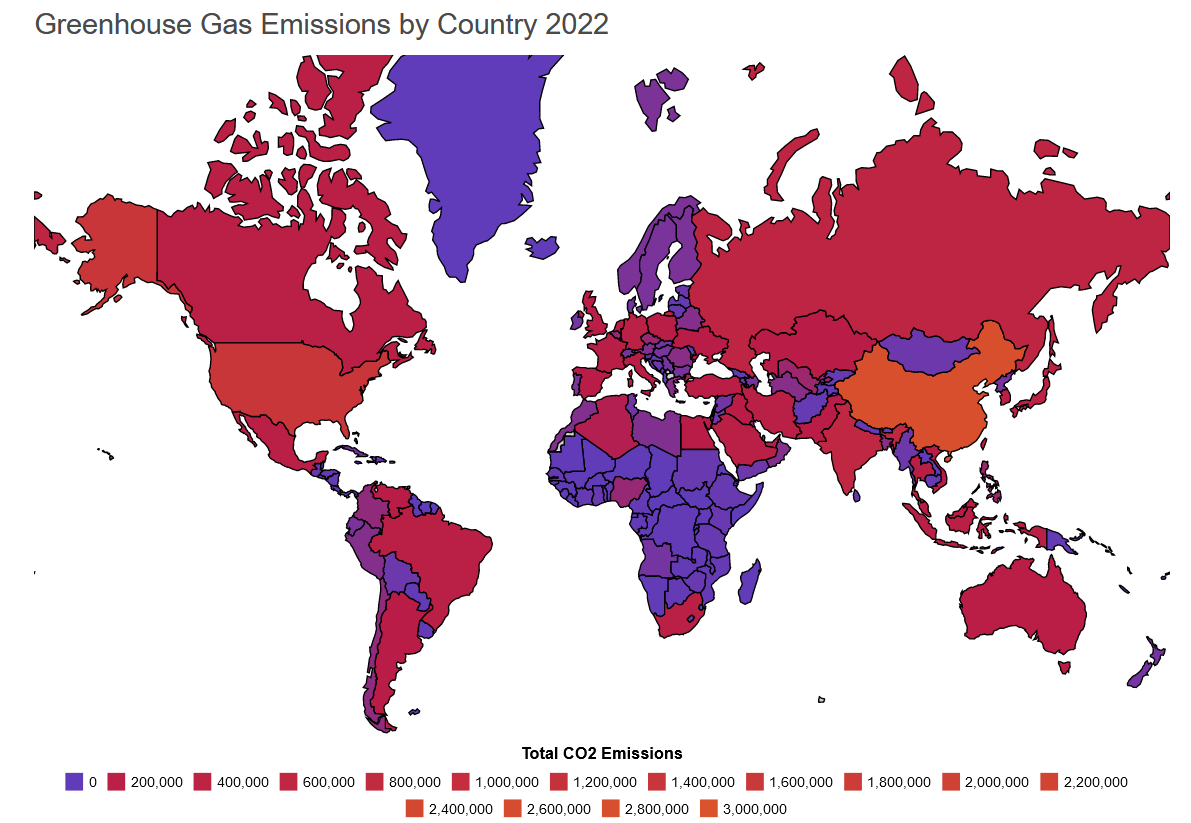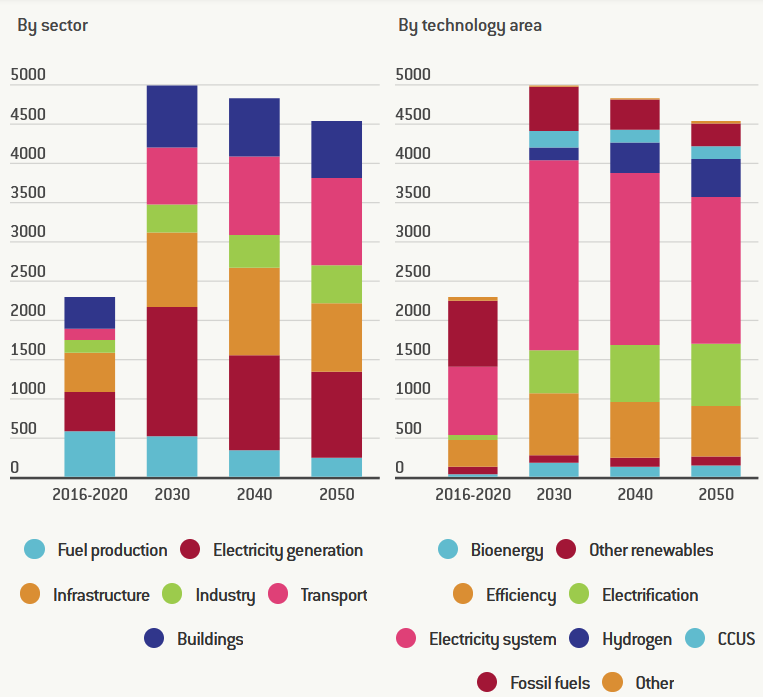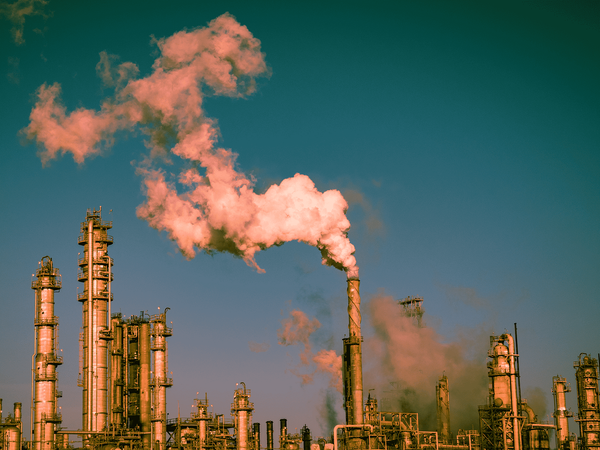What does it cost to end climate crisis?

If global temperature rises by 2.9°C compared to pre-industrial levels, the world's most-vulnerable countries’ average GDP will fall by 20% by 2050 and 64% by 2100. These nations require at least $300 billion a year to respond to damage by 2030. Now, the question is, who should pay for this?
Top emitters

Figure 1 is a visual representation of greenhouse gas (GHG) emissions around the world, where orange represents the highest, followed by red, purple and blue, in descending order.
COP26 President Alok Sharma described the UN's COP26 climate summit in November 2021 as a "fragile win" for the world, but unless the commitments made are turned into action soon, the chances of reducing global temperatures is slim. The climate crisis will cost around $300 billion to $50 trillion over the next two decades. McKinsey & Co.'s most recent analysis of the costs of achieving net-zero emissions is approximately $9.2 trillion per year between now and 2050.
No matter how rich, the nations are not ready to bear the whole cost, but poor nations think that rich nations should be held accountable since the world's richest 1% are responsible for emitting double the CO2 of the poorest 50%.
China
In 2020 China announced its goal to reach a peak in CO2 emission by 2030 and achieve carbon neutrality by 2060. However, the country released 13.8 GT of CO2 in 2020. With current policies, the numbers are projected to rise to 14.5 GT by 2030. According to the plan, China is set to increase the use of non-fossil fuel-based energy from 16% in 2020 to 25% by 2030, targeting a 65% drop in CO2 emissions per unit of GDP from the 2005 level. To meet the target, China has to do a lot more and spend a lot more. As the country also heavily suffers from air pollution, the finance minister is planning to increase the budget for air pollution by 2.5 billion yuan to 30 billion yuan ($4.75 billion) this year (2022).
European Union (EU)
The EU comes in the second position with Germany, France, and Italy leading the list of the highest emitters. Between 2019 and 2021, the EU introduced and strengthened the Fit for 55 packages, setting the new target of cutting down the GHG emissions by at least 55% by 2030 from 1990 levels and becoming climate neutral by 2050, although each country has its national targets that work towards meeting the EU’s objective. In 2020, the EU emitted approximately 2.54 billion metric tons of CO2, which was 13% lower compared to 2019 levels and 31 % lower than in 1990.
India
Its rising economy has exponentially spiked the use of fossil fuels. The country made plans to make a transition away from coal towards green technology and aims to achieve net-zero emission by 2070. In 2021, India released 2.88 GT of CO2. India plans to cut 1 billion kg of CO2 (1GT) by the end of 2030, and the analysts estimate it will require trillions of dollars, access to better technology, and a reorganization of some sectors of the economy. According to the Delhi-based think tank Council on Energy, Environment and Water, India will need an average of $28 billion per year to achieve net-zero by 2070.
The USA
The country rejoined the Paris Agreement in 2021 and set an ambitious target of reducing GHG emissions by at least 40% below 1990 levels by 2030. Additionally, the country signed the global methane pledge and promised to cut the emissions by 30% by 2030. In 2020, the country's GHG emissions were 5215.6 million metric tons, which was 11% lower compared to 2019. The decrease in 2020 could have come from economic hiatus, caused by COVID-19 as the country again saw an increase in emissions by 6.2% in 2021. Still, the data for 2020 is 22% below 2005 levels, which is a significant improvement. According to Deloitte, inaction on climate change could cost the US economy $14.5 trillion over the next 50 years. Although the $1.75 trillion bill, called the Build Back Better Act, was passed in 2021 to invest in clean energy, President Biden earlier this year announced the break-up of the plan. He is still hopeful that Congress would pass parts of it, including $555 billion in climate spending.
Russia
Another major country that contributes to about 20% of the global methane leak. Russia could be a large carbon sink, when resources are used appropriately, but is turning into a carbon emitter, releasing a huge amount of GHG into the atmosphere every year. In 2020, Russia released about 1.5 billion tons of CO2 into the atmosphere. Although the country has pledged to end deforestation by 2030, it needs hundreds of trillion-dollar to make a transition towards green technology as the country excessively depends on fossil fuels for energy generation at the moment.
Japan
In 2020, Japan released 1.03 billion tons of carbon. The cabinet of Japan has adopted budget proposal parameters for 2022, allocating 4.4 trillion yen ($40 billion) to measures, such as carbon reduction. To achieve the goal of net-zero by 2050, Japan will increase the budget accordingly and trillions of dollars are going into the development of green technology.

Bruegel published an article last year about how much investment is needed worldwide to meet net-zero by 2050. Figure 2 demonstrates the estimation based on different sectors and technologies. By 2030, approximately $5 trillion has to be invested per year, which can go down to about $4.7 trillion by 2040 and about $4.5 trillion by 2050.
Fighting climate change takes a lot more than money. It needs understanding and coordination between the countries. Wealthy countries should help vulnerable countries as the latter come forward with their clear plans to achieve the emission targets.



